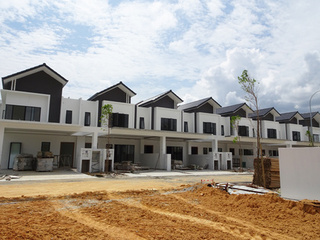
Architects play a crucial role in shaping Florida’s skyline, but their responsibilities extend far beyond design and aesthetics. Architects must also ensure compliance with a variety of construction laws that protect public safety, maintain building standards, and mitigate legal risks. Continue reading and reach out to the Florida construction attorneys here at Ansbacher Law to learn more about how architects can best comply with Florida’s construction laws to avoid legal disputes. Here are some of the questions you may have:
What Are the Key Florida Construction Laws Architects Should Be Aware Of?
Florida has an extensive set of laws and regulations governing construction, with several directly affecting architects. One critical statute is the Florida Building Code (FBC), which sets minimum standards for construction, including structural integrity, fire safety, and energy efficiency. Architects must stay updated with frequent amendments to the FBC, as non-compliance can result in penalties or project delays.
In addition to the FBC, architects need to adhere to zoning laws and land-use regulations. These laws dictate how land can be developed and often vary by municipality. Violations can lead to disputes with local authorities or even the halting of a project.
Another essential consideration is adherence to the Americans with Disabilities Act (ADA). Florida requires all public and commercial buildings to meet specific accessibility standards, ensuring equal access for individuals with disabilities. Architects must integrate these requirements into their designs from the outset to avoid retroactive modifications and potential lawsuits.
How Can Architects Stay Updated on Evolving Legal Requirements?
Construction laws are not static; they evolve to address new safety concerns, environmental challenges, and societal needs. Architects can stay informed by subscribing to industry publications, attending workshops, and joining professional organizations like the American Institute of Architects (AIA). The AIA often provides resources, seminars, and updates on legal developments.
Collaboration with construction lawyers is another invaluable strategy. Lawyers specializing in construction law can provide guidance on regulatory changes, review contracts, and assist with risk management. A proactive partnership between architects and legal counsel can minimize potential compliance issues before they arise.
Regular training sessions for architectural teams also play a vital role in ensuring compliance. Firms that invest in ongoing education create a culture of awareness and precision, where team members are equipped to handle regulatory complexities effectively.
What Steps Can Architects Take to Avoid Legal Disputes?
Preventing legal disputes begins with clear communication and meticulous planning. Architects should work closely with clients, contractors, and engineers to ensure all parties have a shared understanding of the project’s scope and requirements. Misalignment can lead to costly errors and delays, which may open the door to litigation.
Comprehensive documentation is another key to legal protection. This includes detailed contracts, change orders, and design approvals. By maintaining clear records, architects create a paper trail that can serve as evidence in case of disputes.
Finally, architects should carry professional liability insurance. This safeguard protects them from claims related to design errors, omissions, or negligence. While insurance doesn’t replace the need for compliance, it provides an essential safety net in the unpredictable world of construction.

